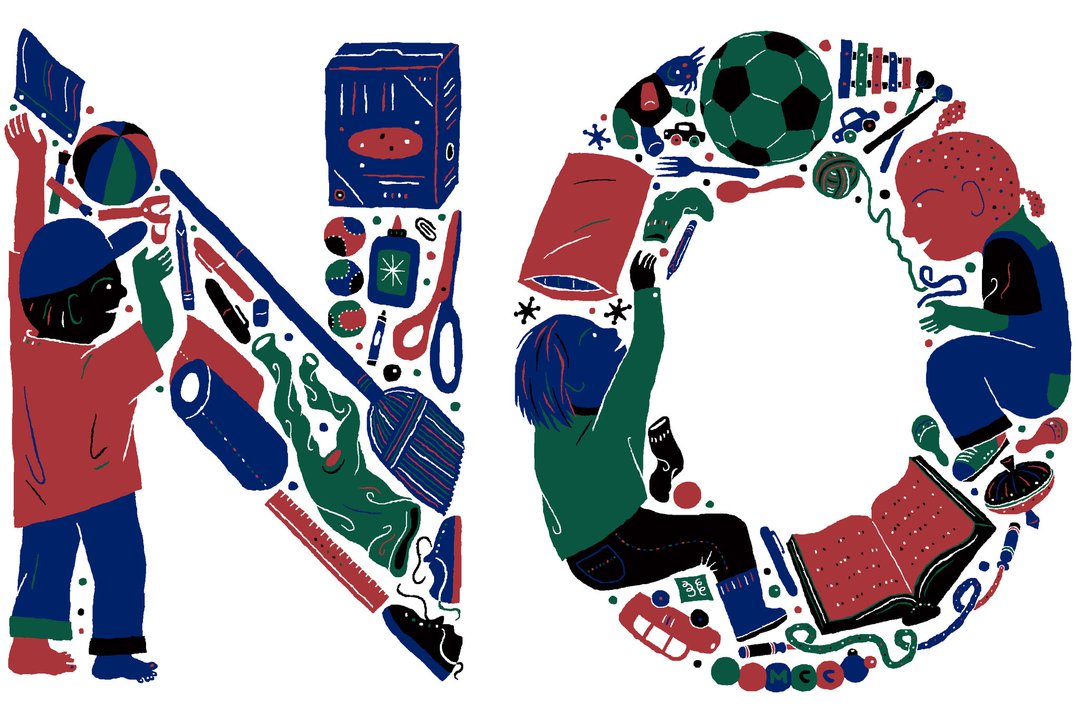Scott Sonenshein
June 6, 2017
Despite the temptation for parents to say yes to their children’s wishes, research shows there’s an insidious side to chasing after the newest thing others have. It fosters a sense of deficiency that can never be fully satisfied. First they want the doll, then all of the accessories — and of course the four-story Barbie mansion.
And so I’ve taken on the work of saying no sometimes. At first, not surprisingly, my daughters, aged 4 and 9, revolted. They called me a bad father and I got plenty of mean looks. But over time, they realized the fun that comes from a no. Now my daughters pretend that their Elsa doll plays with a package of Shopkins, giving both toys a second, and better, life.
It turns out that saying no pays off far beyond avoiding raising spoiled kids. When we always yield to our children’s wants, we rob them of the opportunity to find solutions by adapting what they already have. Kids who learn from denial realize at an early age that they won’t always have the perfect tool for every job. They might not know something, have something, or be something. But that’s not the end of pursuing goals — it’s the beginning of activating their resourcefulness to find another way.
Youngsters are naturally resourceful. Give toddlers a frying pan and all sorts of uses come to their minds. As adults, we’re stuck using it to make a stir-fry. Many years of chasing after things we don’t need erodes our own ability to make more out of what we already have. It also sets a bad example for our kids.
In one study, researchers asked elementary school children to help Bobo the Bear, a stuffed animal, reach his toy lion using some materials: building blocks, a pencil, an eraser, a ball, a magnet, a toy car and a wooden box.
As children grow older, their brains develop in ways that should make it easier for them to solve this type of problem. Indeed, the oldest children in the study (6- and 7-year-olds) reached the correct solution (i.e., using the wooden box to prop up the building blocks) faster, on average, than the younger participants, who were 5.

Adam McCauley
But there was one condition in the experiment when the younger children ended up outperforming the older kids. And it had nothing to do with innate talents or artistic tendencies.
The researchers made a subtle change in how they displayed the materials. Instead of laying them all out on the table, the researchers used the wooden box as a container to store everything else, such as the magnet and pencil. Upon seeing the box acting like a container, the older children struggled to expand it to anything beyond a container. For the younger children, the box remained just as flexible a resource as it was before.
Each time we acquiesce to our kids’ latest request to buy something, we subtly condition them that their resources have limited uses. An occasional veto will compel them, in this case literally, to think outside the box.
In American culture, abundance tends to be seen as a symbol of success, prompting some parents to say yes to things they can’t really afford. Witness the elaborate coming of age parties people across cultures and income levels throw for their children, even if it means going into debt.
Many people who grow up without much recognize resourcefulness as an essential skill to get by. Those of us fortunate to live in relative abundance can benefit from occasionally experiencing scarcity. To be sure, I’m not suggesting denying children a generous supply of things they actually need like healthy meals, warm clothes and love. But plenty of wishes we cater to teach the wrong message. By having children occasionally experience scarcity, we can help them solve problems more effectively.
In one study, a set of participants wrote a brief essay about a time in childhood when they didn’t have much, while a second set wrote about growing up having a lot. Afterward, the researchers presented both groups with a problem that required using Bubble Wrap in different ways. People assigned to the scarcity group had better solutions compared to the abundance group.
Why might thinking about scarcity lead people to view their resources more expansively? With abundance, people treat resources as what they appear to be on the surface, utilizing them in traditional ways. But when embracing scarcity, they give themselves freedom to use resources in new ways. Imagine the upside of a weekend full of “nos” — it’s likely to be one occupied with new experiences: invented games, a family dance party or time spent outdoors.
This strategy has worked wonders for our family, and I received the ultimate compliment after my older daughter’s most recent birthday party. It was “the best day of my life,” she gleefully told me. Instead of paying for a party, we had a scavenger hunt in a nearby park where we asked the kids to scour the area to find things they could use to solve challenges, like making containers to protect an egg from a 10-foot fall. There were three teams of kids, each with their unique combination from a variety of materials, including newspaper, cups, leftover Halloween jack-o’-lanterns, dirt, cotton and Bubble Wrap. The kids, naturally resourceful when we let them be, had a blast. And no eggs were broken.
All was good until we got home. “Can I open my presents now?” my daughter asked. “Yes,” I hesitantly replied. I’ll have plenty of other chances down the road for my next no.
c.2024 The New York Times Company


